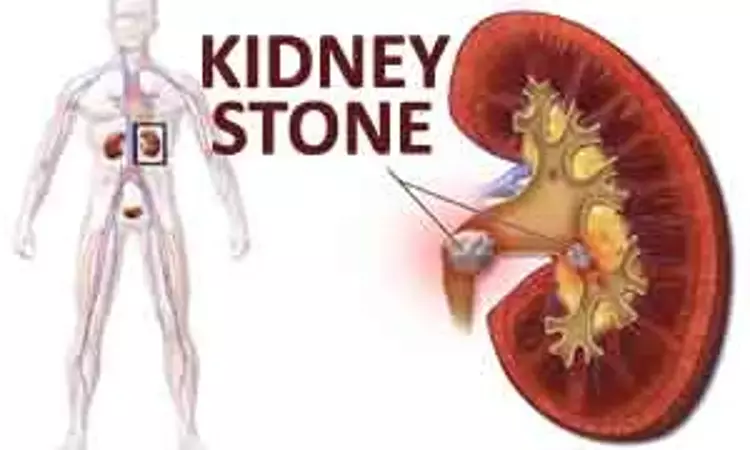- Home
- Medical news & Guidelines
- Anesthesiology
- Cardiology and CTVS
- Critical Care
- Dentistry
- Dermatology
- Diabetes and Endocrinology
- ENT
- Gastroenterology
- Medicine
- Nephrology
- Neurology
- Obstretics-Gynaecology
- Oncology
- Ophthalmology
- Orthopaedics
- Pediatrics-Neonatology
- Psychiatry
- Pulmonology
- Radiology
- Surgery
- Urology
- Laboratory Medicine
- Diet
- Nursing
- Paramedical
- Physiotherapy
- Health news
- Fact Check
- Bone Health Fact Check
- Brain Health Fact Check
- Cancer Related Fact Check
- Child Care Fact Check
- Dental and oral health fact check
- Diabetes and metabolic health fact check
- Diet and Nutrition Fact Check
- Eye and ENT Care Fact Check
- Fitness fact check
- Gut health fact check
- Heart health fact check
- Kidney health fact check
- Medical education fact check
- Men's health fact check
- Respiratory fact check
- Skin and hair care fact check
- Vaccine and Immunization fact check
- Women's health fact check
- AYUSH
- State News
- Andaman and Nicobar Islands
- Andhra Pradesh
- Arunachal Pradesh
- Assam
- Bihar
- Chandigarh
- Chattisgarh
- Dadra and Nagar Haveli
- Daman and Diu
- Delhi
- Goa
- Gujarat
- Haryana
- Himachal Pradesh
- Jammu & Kashmir
- Jharkhand
- Karnataka
- Kerala
- Ladakh
- Lakshadweep
- Madhya Pradesh
- Maharashtra
- Manipur
- Meghalaya
- Mizoram
- Nagaland
- Odisha
- Puducherry
- Punjab
- Rajasthan
- Sikkim
- Tamil Nadu
- Telangana
- Tripura
- Uttar Pradesh
- Uttrakhand
- West Bengal
- Medical Education
- Industry
Zinc both inhibits and promotes growth of kidney stones, study finds

USA: Zinc is involved both in promoting and inhibiting the growth of calcium oxalate crystals responsible for the formation of kidney stones, confirms a recent study in the journal Crystal Growth & Design.
On the way to discover the impact of zinc on kidney stones -- two different and contradictory theories have emerged. First is that Zinc stops the growth of the calcium oxalate crystals that make up the stones and second it is known to alter the surfaces of crystals which encourages further growth.
The study showed both theories to be correct. It is the first study to offer some resolution to the differing hypotheses.
"What we see with zinc is something we haven't seen before. It does slow down calcium oxalate crystal growth and at the same time it changes the surface of the crystals, causing defects in the form of intergrowths. These abnormalities create centers for new crystals to nucleate and grow," reports Jeffrey Rimer, Abraham E. Dukler Professor of Chemical and Biomolecular Engineering at the University of Houston, who refers to the effect as a double-edged sword.
The formation of kidney stones is a pathological condition that has increased in frequency among patients, leading to an increased amount of suffering and steep rise in medical costs.
Though calcium oxalate crystals are found everywhere, the most naturally abundant form of these crystals are calcium oxalate monohydrates (COM), the kind found in human kidney stone disease. Along with COM, kidney stones are composed of various hard deposits of inorganic salts and organic compounds (e.g., proteins) crystallizing or sticking together in concentrated urine. They can be severely painful to pass through the urinary tract.
In this study, Rimer and his team used a combination of in vitro experiments and computational modeling to decode the effects of zinc on COM crystal growth.
"The techniques we're using in our lab to investigate these systems enable us to get a better picture and to deconstruct these complex systems as a means of identifying new ways to prevent kidney stone formation," said Rimer. "These are enabling tools that allow us to understand at an almost molecular level how various species in urine can regulate crystal growth."
Rimer's findings on the dual role of zinc on COM was confirmed by atomic force microscopy measurements showing a unique ability of zinc ions to alter the termination of crystal surfaces.
The team compared the impact of zinc on COM, with similar ions like magnesium.
"We wondered what would happen if we used alternative ions commonly found in urine, such as magnesium, and the answer was nothing. It had little to no effect, whereas zinc had a major effect. This is an excellent demonstration of how subtle differences in the nature of various species impacts their interaction with crystal surfaces," said Rimer.
Reference:
The study titled, "Zinc Ions Modify Calcium Oxalate Growth by Distinct Transformation of Crystal Surface Termination," is published in the journal Crystal Growth & Design.
DOI: https://pubs.acs.org/doi/10.1021/acs.cgd.1c00166
Hina Zahid Joined Medical Dialogue in 2017 with a passion to work as a Reporter. She coordinates with various national and international journals and association and covers all the stories related to Medical guidelines, Medical Journals, rare medical surgeries as well as all the updates in the medical field. Email: editorial@medicaldialogues.in. Contact no. 011-43720751
Dr Kamal Kant Kohli-MBBS, DTCD- a chest specialist with more than 30 years of practice and a flair for writing clinical articles, Dr Kamal Kant Kohli joined Medical Dialogues as a Chief Editor of Medical News. Besides writing articles, as an editor, he proofreads and verifies all the medical content published on Medical Dialogues including those coming from journals, studies,medical conferences,guidelines etc. Email: drkohli@medicaldialogues.in. Contact no. 011-43720751


